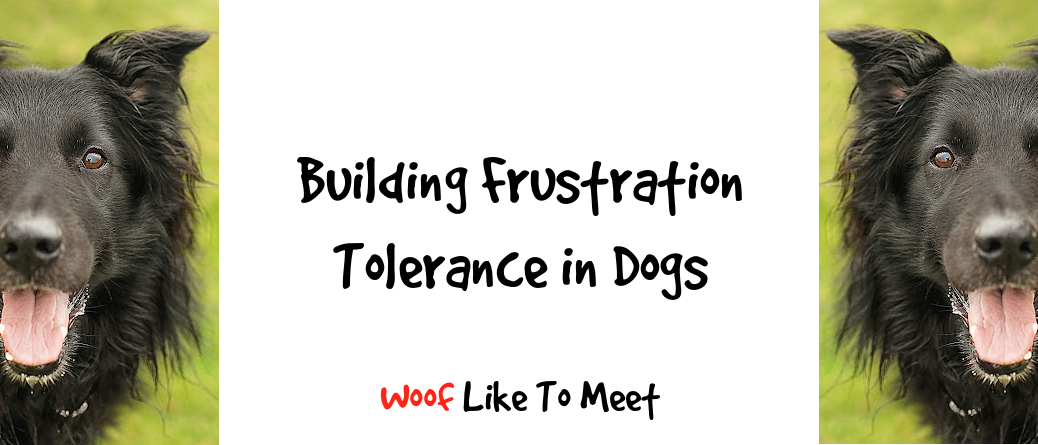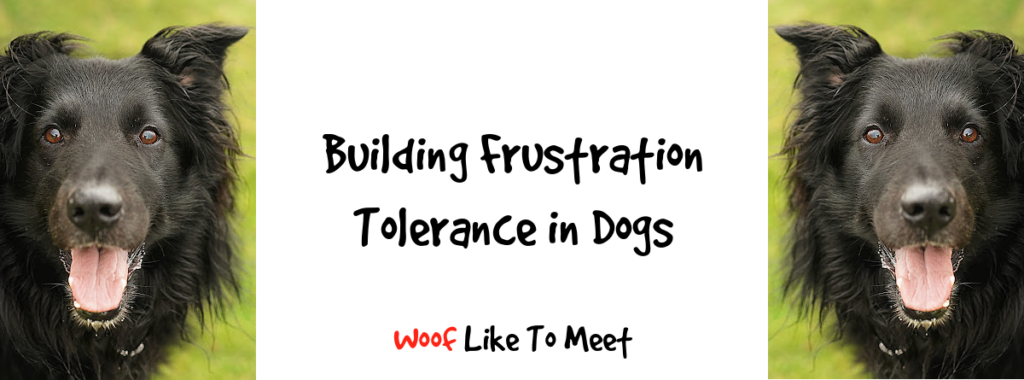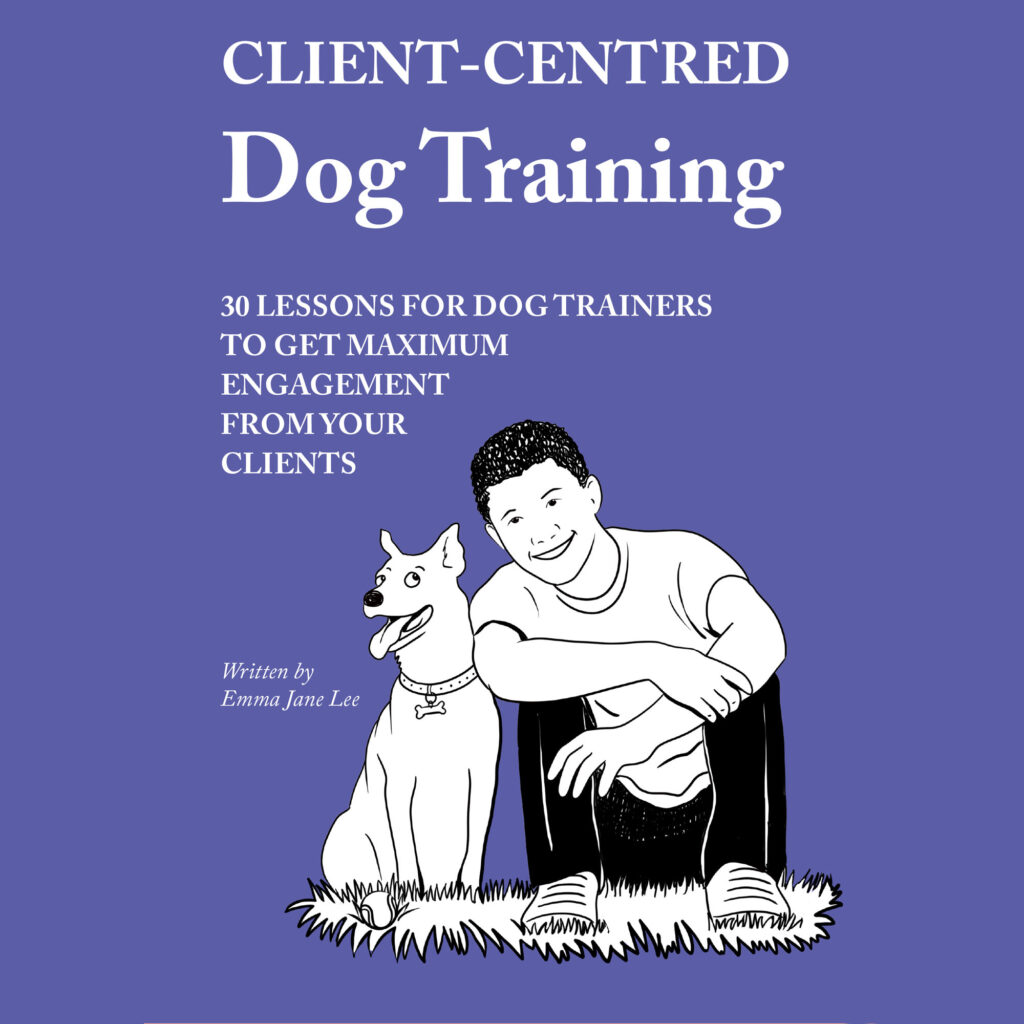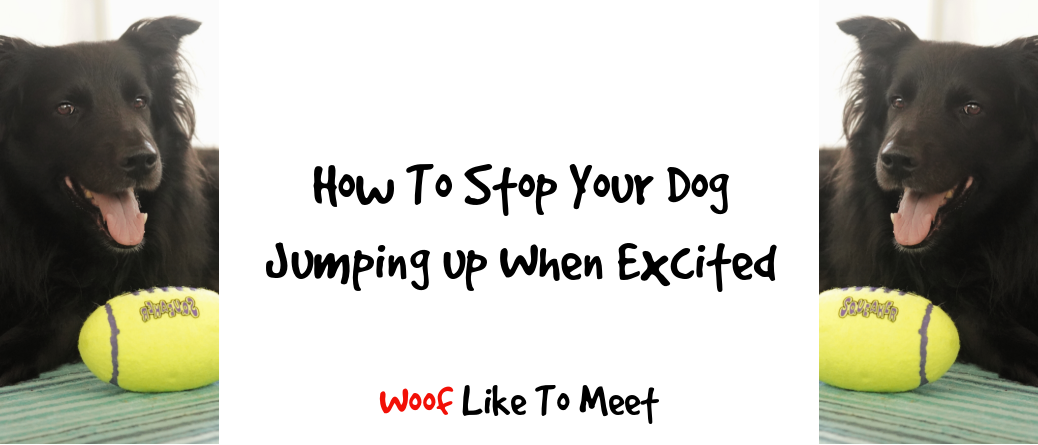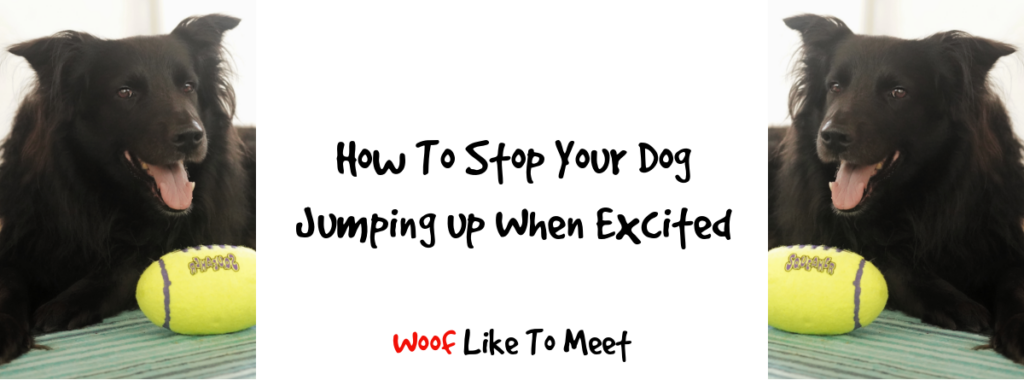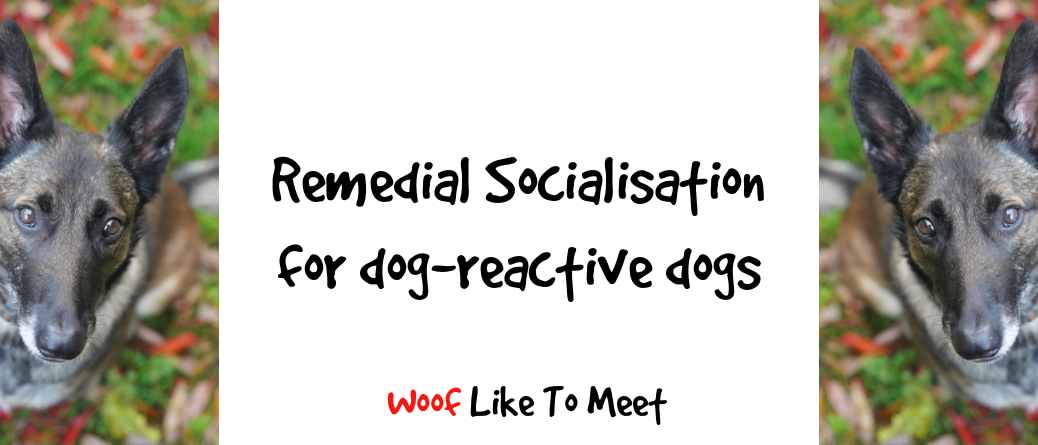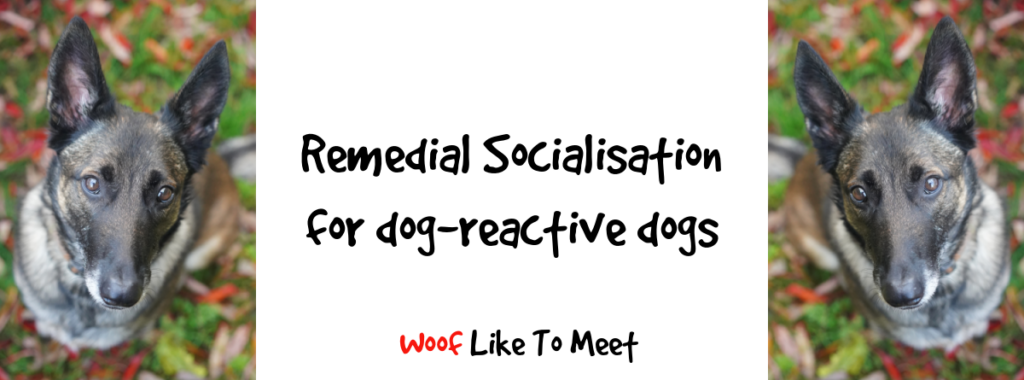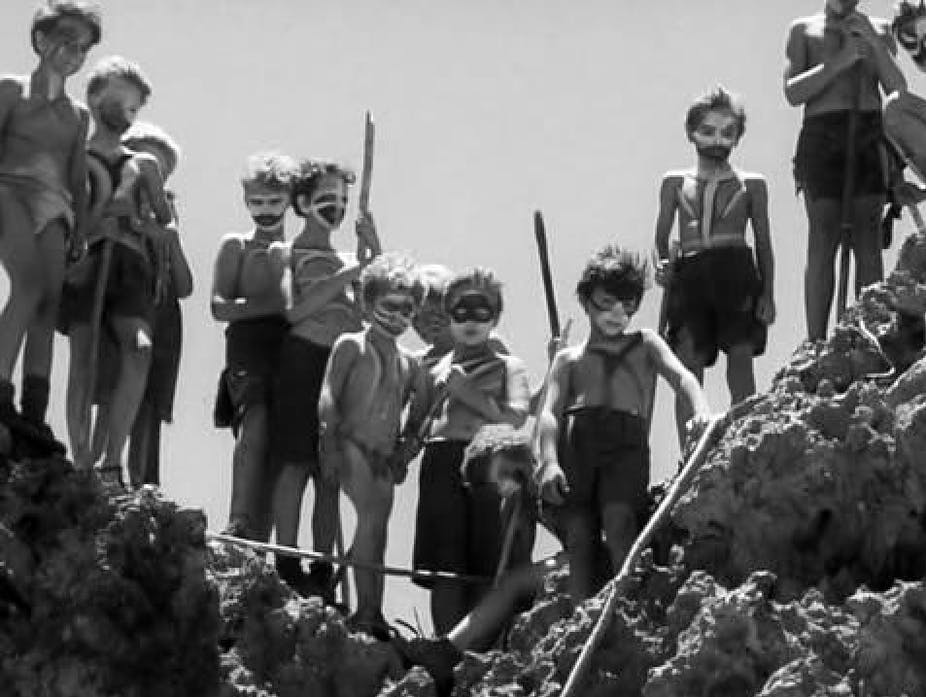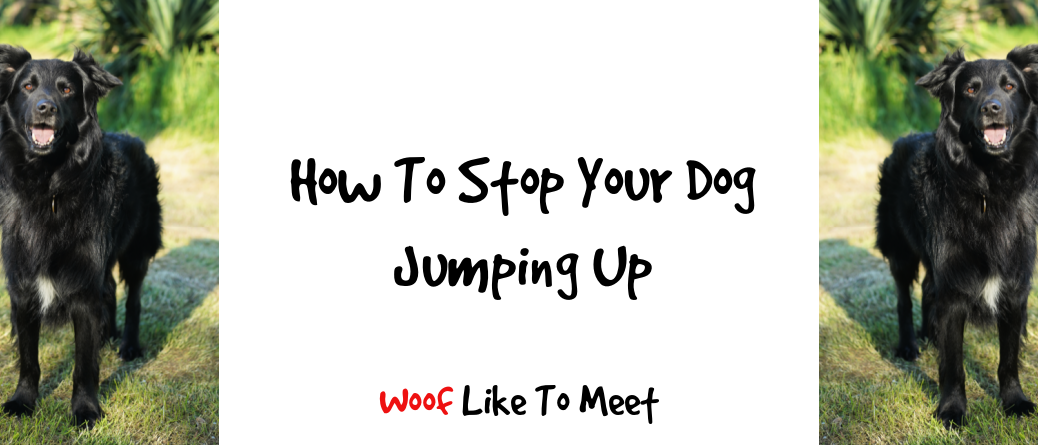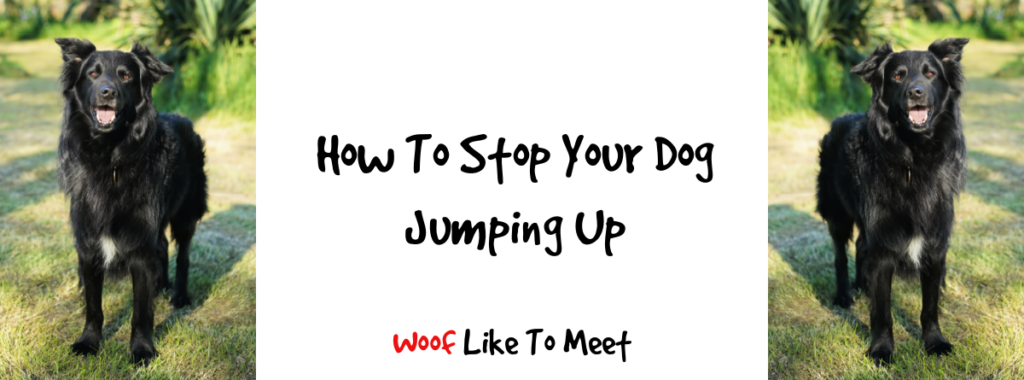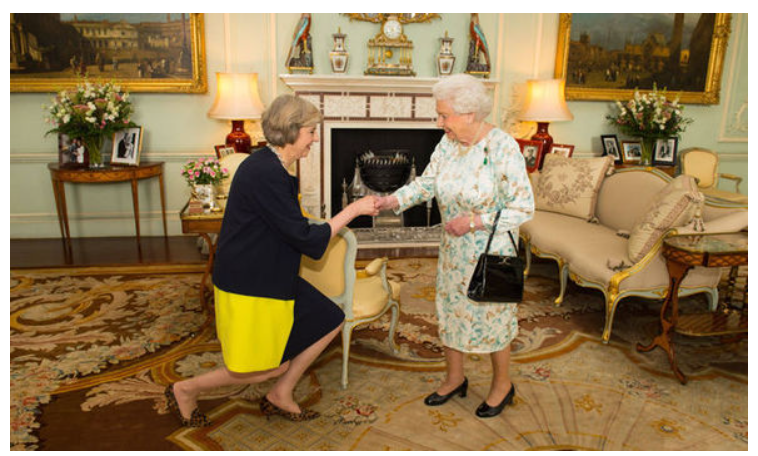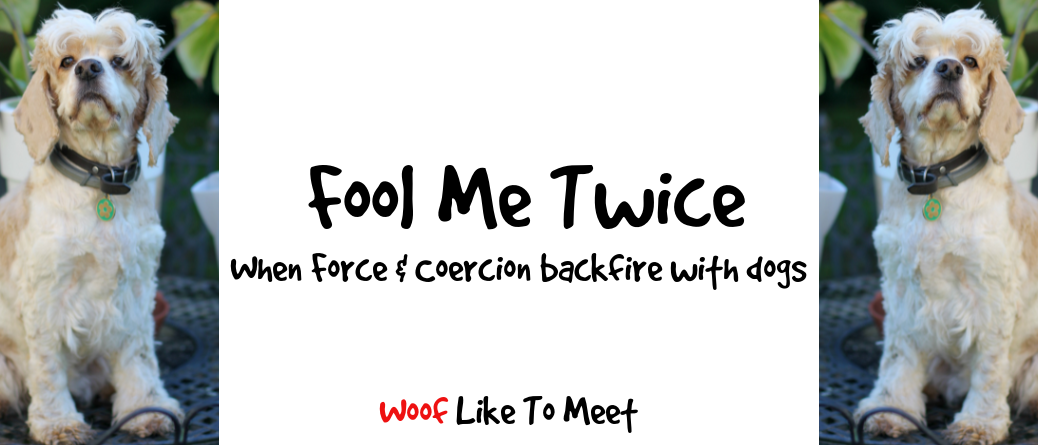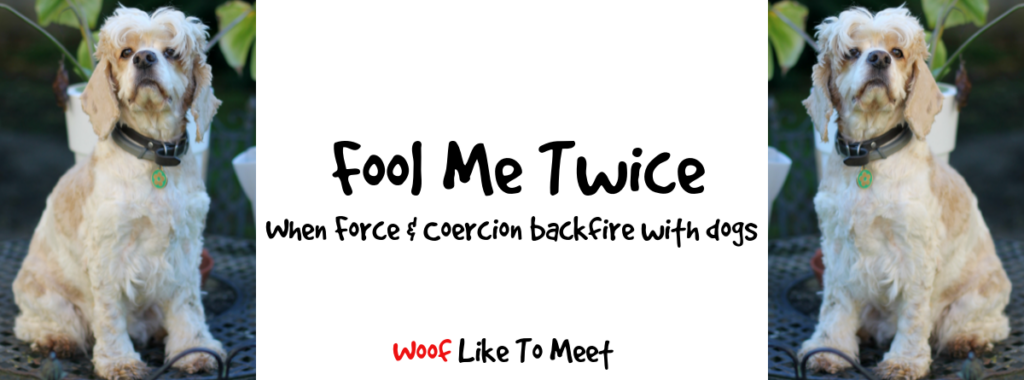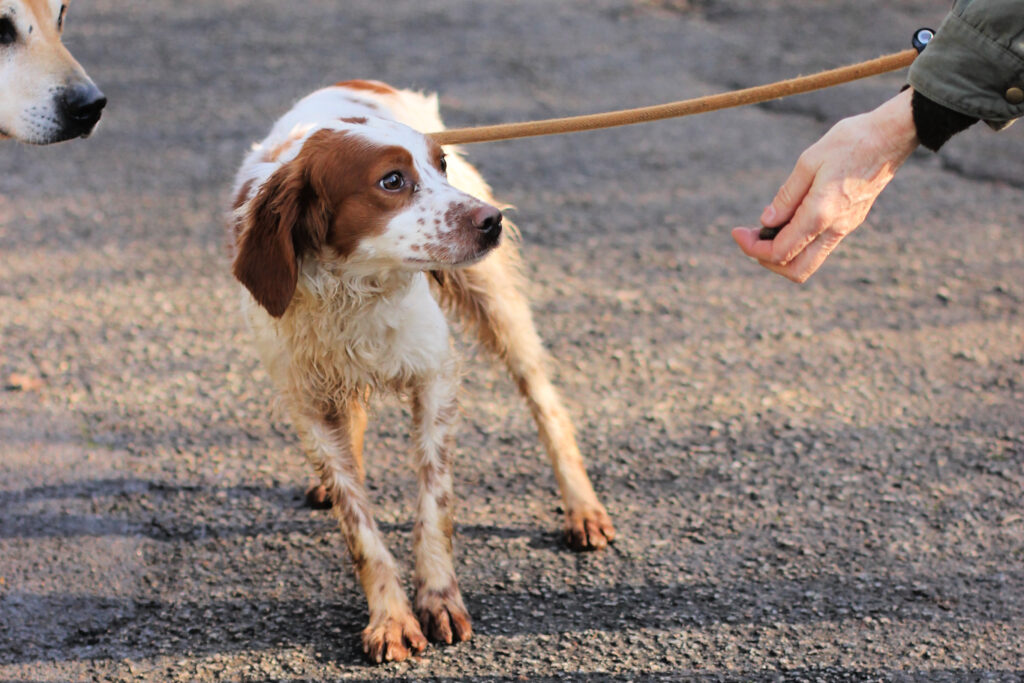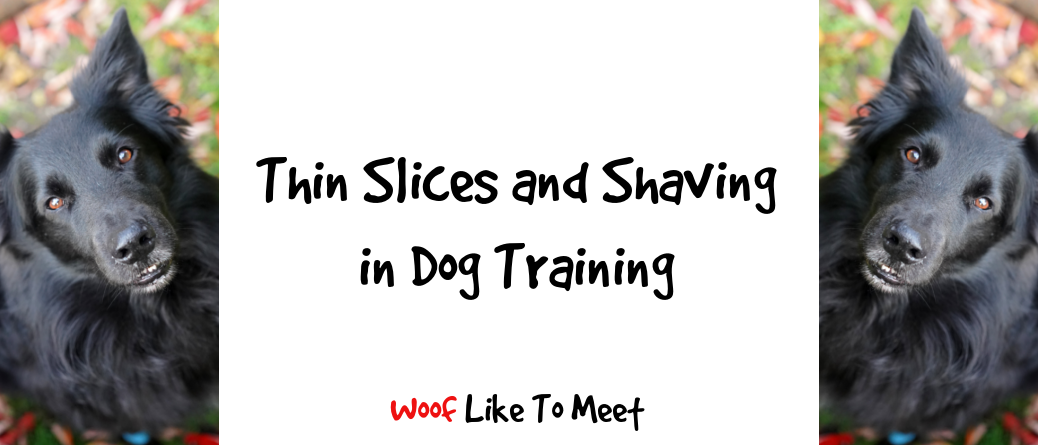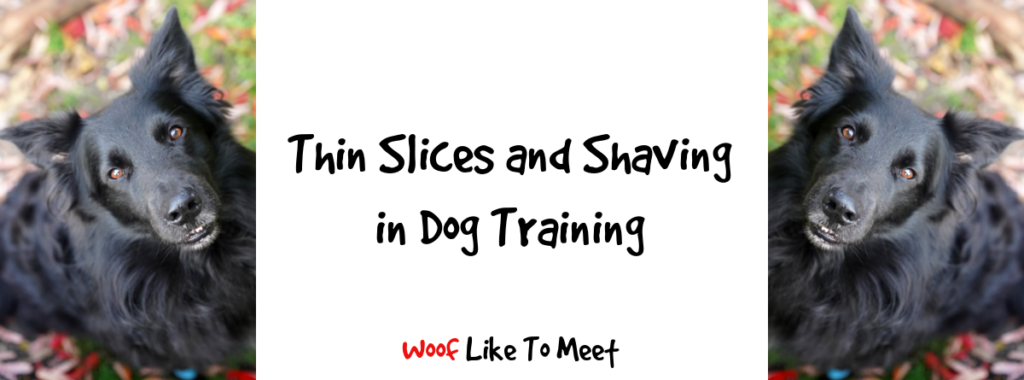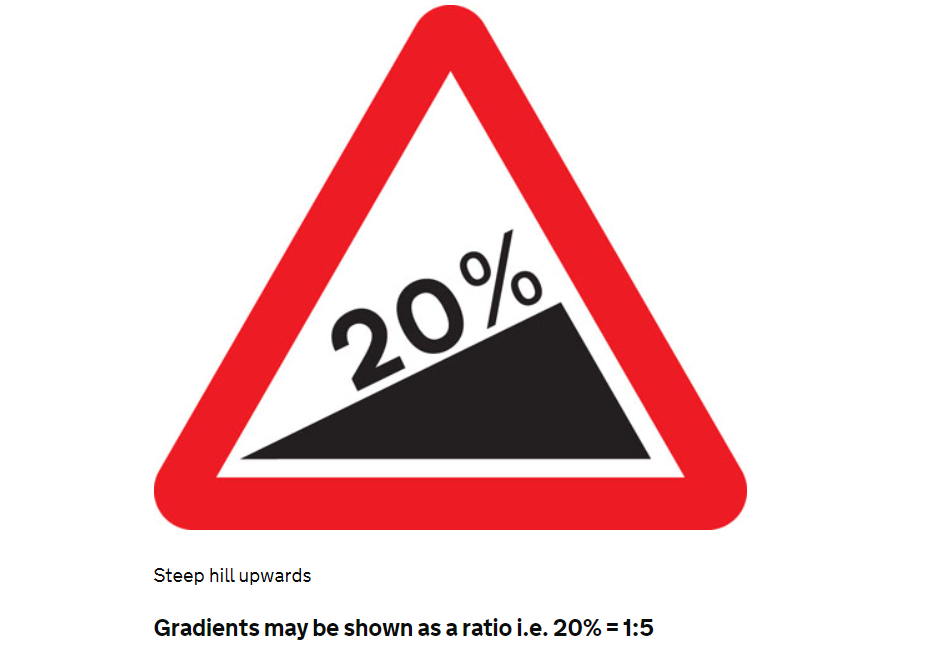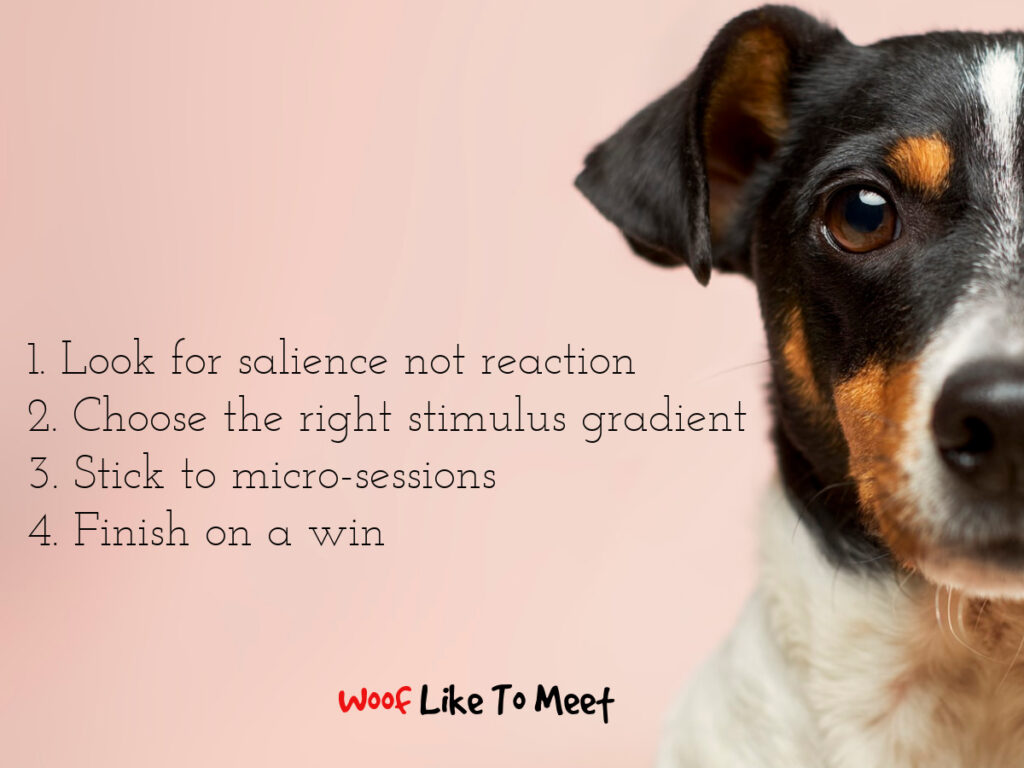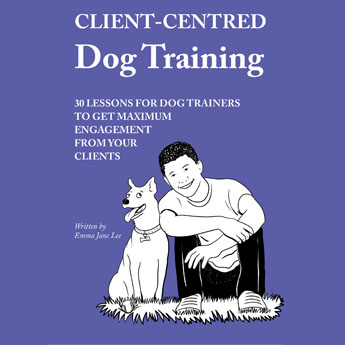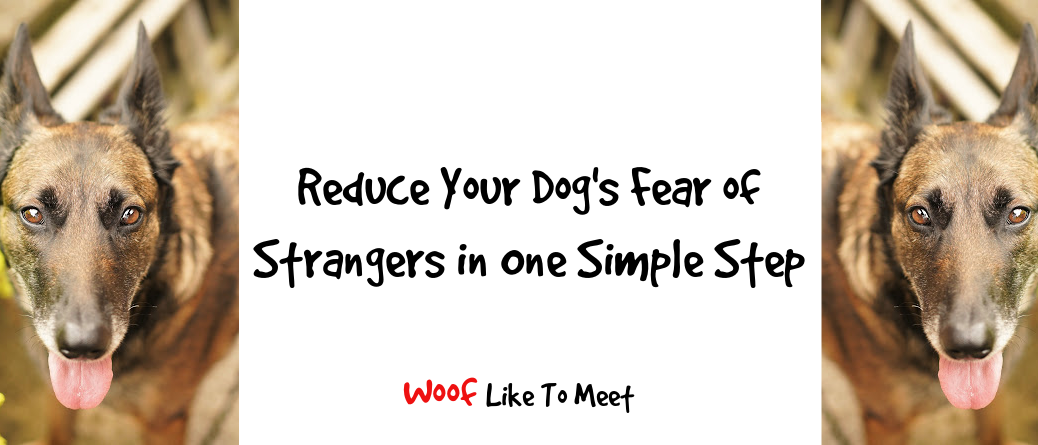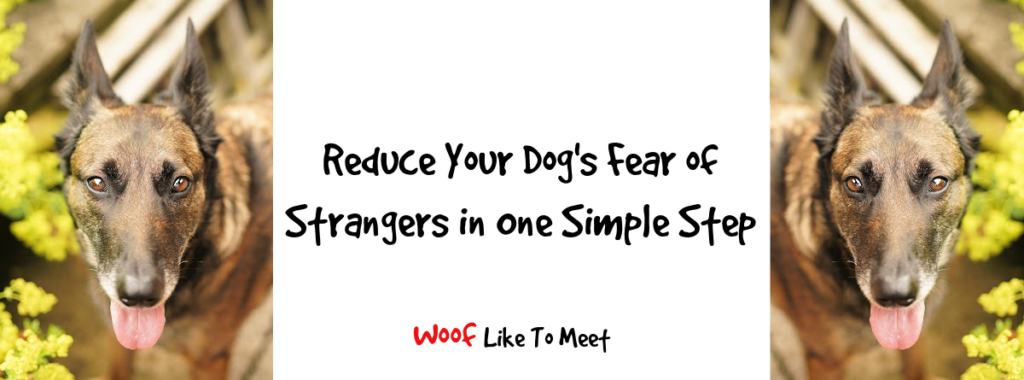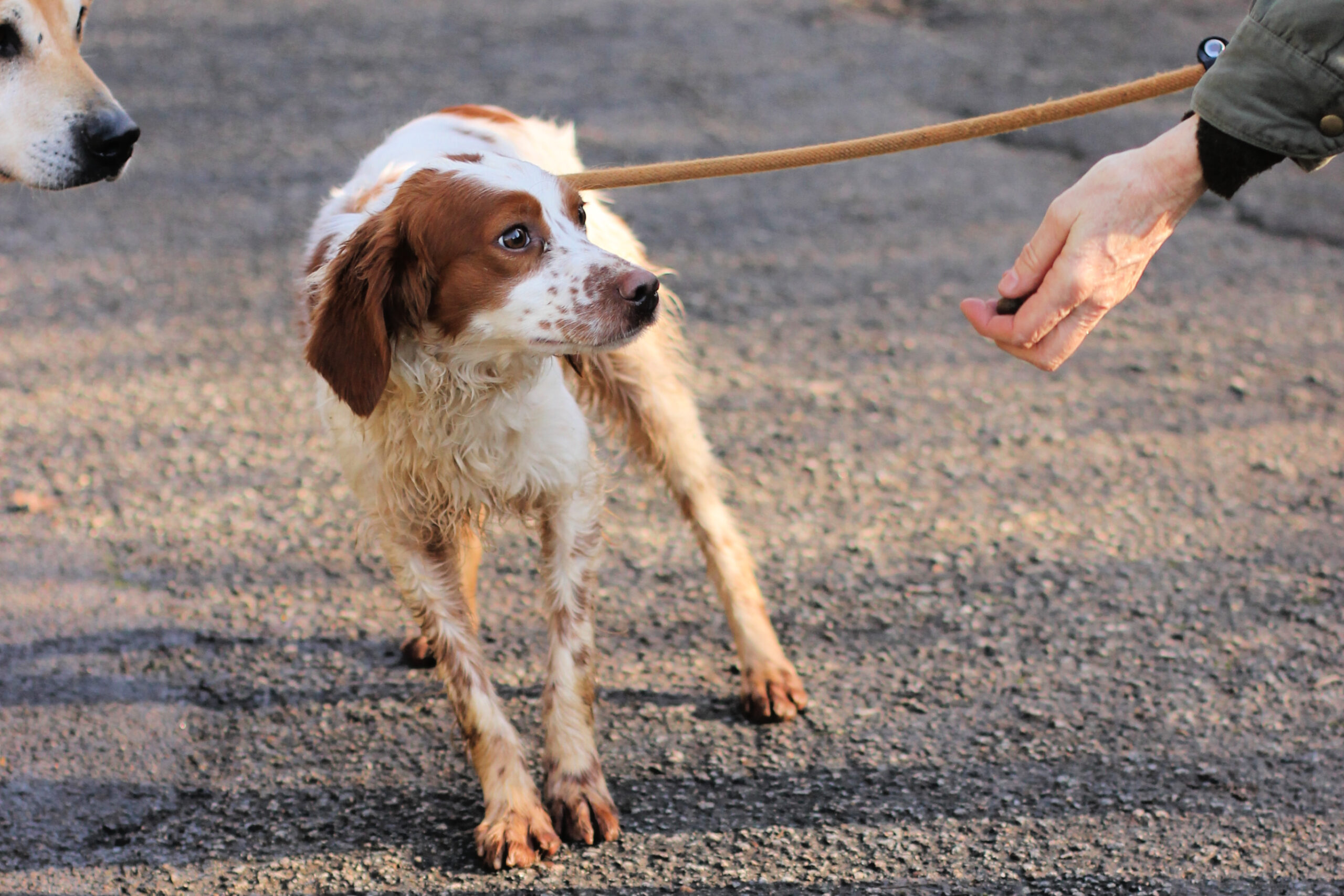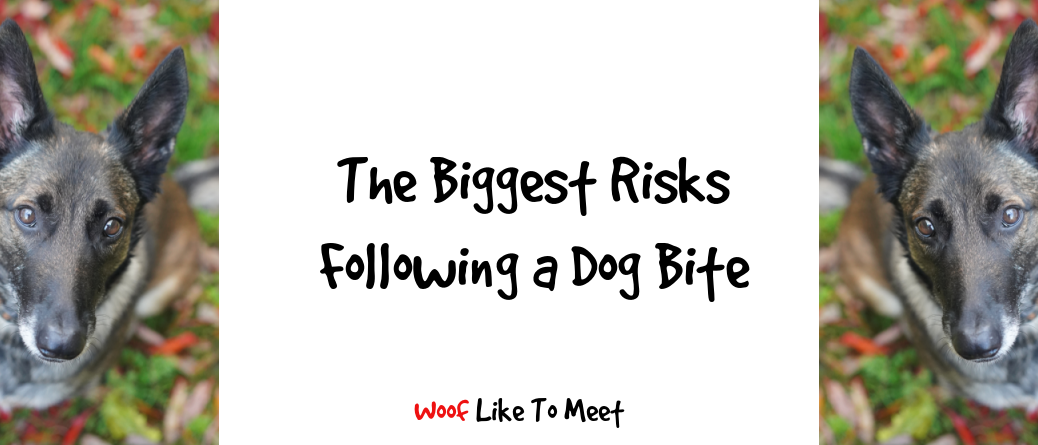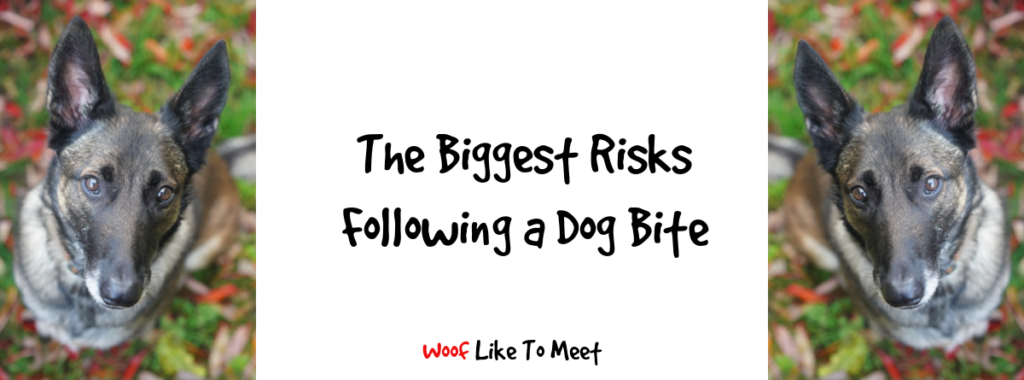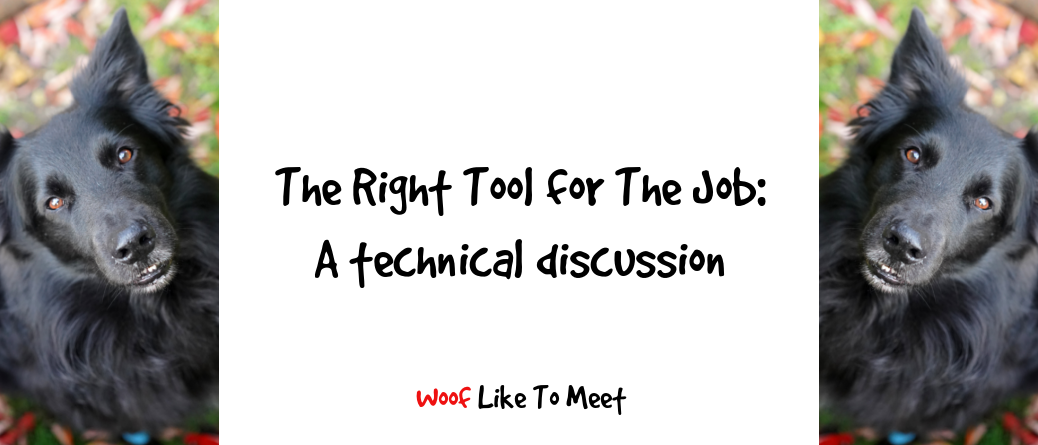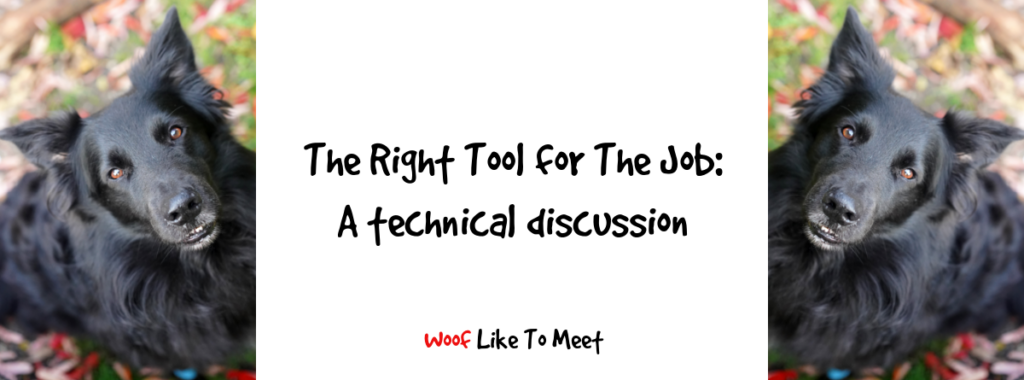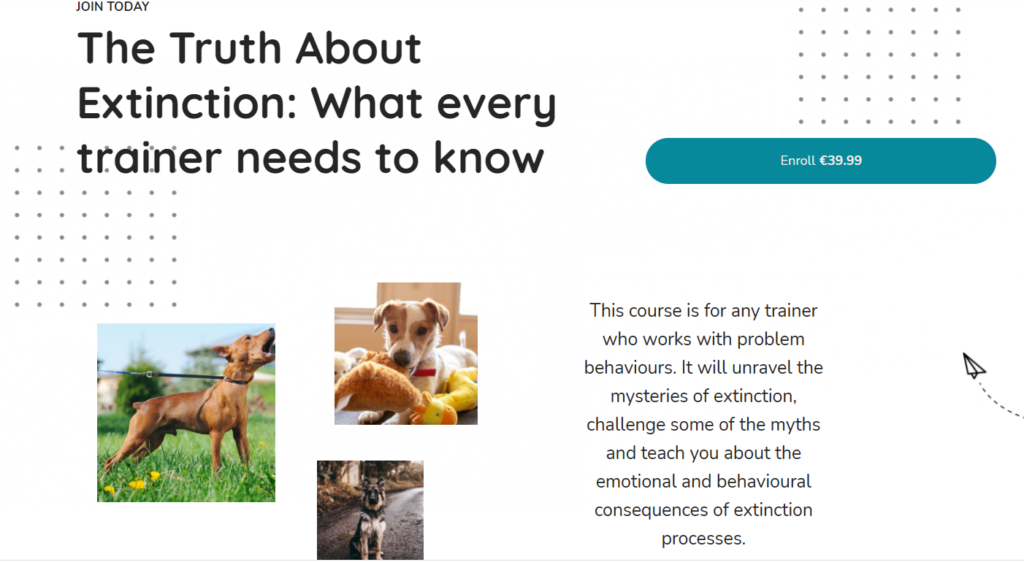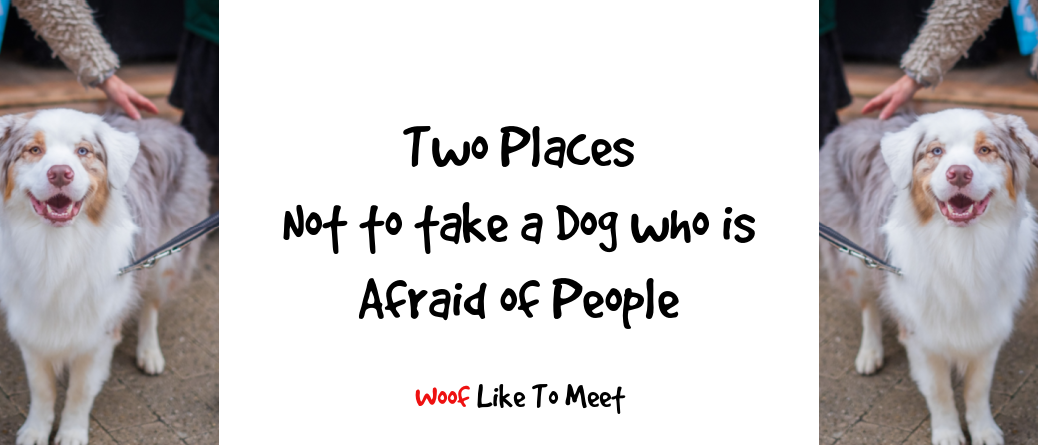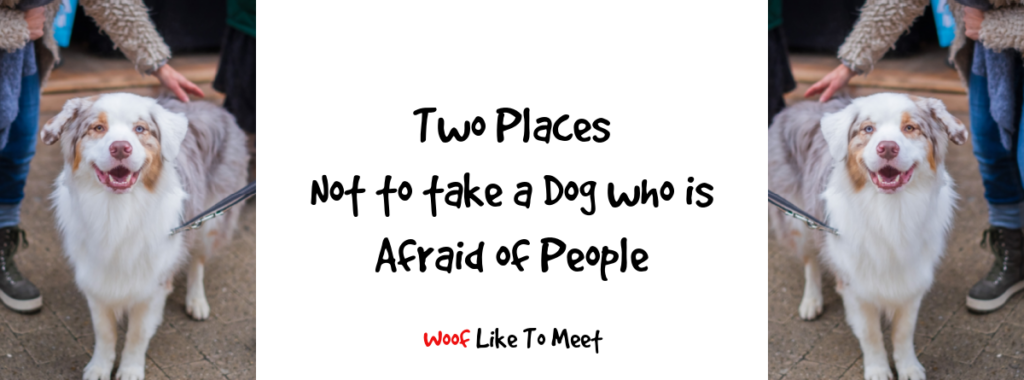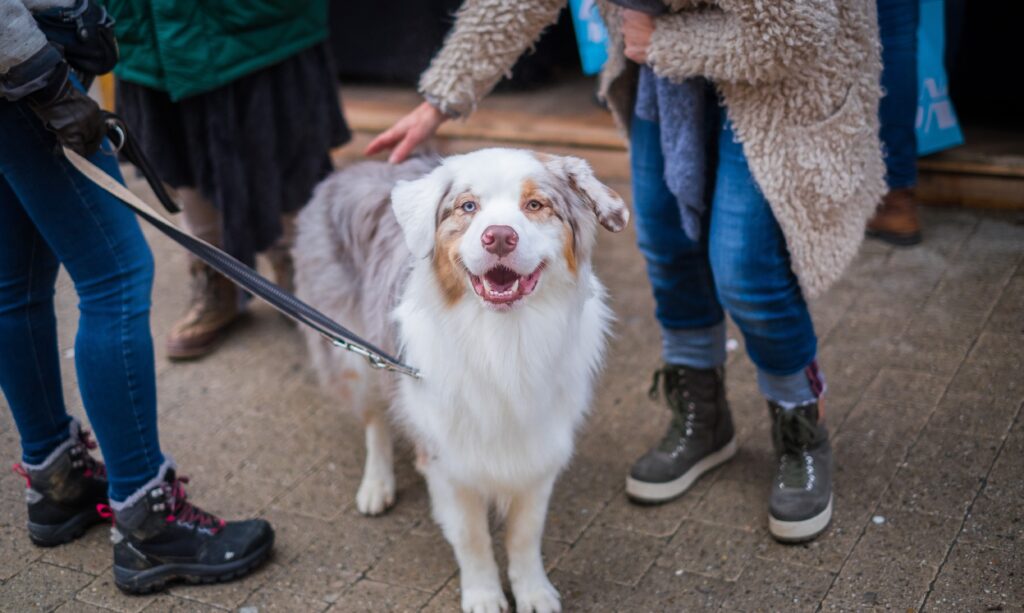One problem I often see in young dogs is an inability to handle any kind of frustration whatsoever. In fact, as I write this, I’m reminded that I saw it often in my old girl Flika, adopted age 14. Memories of her standing on a desk in the office shouting at me that she was absolutely ready to go home, thank you very much, are still fresh in my mind.
Why do we need to teach our dogs to handle frustration?
The first and main reason is that life is frustrating. Dogs are going to have to ride in cars. They’re going to have to wait for their meals unless you leave food down all the time. They’re going to have to sometimes wait for things like going for a walk, getting into a car or getting a treat.
Dogs who can’t tolerate the smallest frustration are the ones we often call pushy or rude, insistent or impatient. In fact, it’s on us: we’ve got to understand that it’s a skill we need to teach young dogs. It’s sometimes caught rather than taught, where the dog kind of accepts frustration. However, because inability to cope with frustration may well be an acquired skill, we also need to make sure we’re setting our dogs up to succeed.
Just this morning for example, I was on my way back to the car with my dogs. Yes, it was the crack of dawn. One reason for that is that I like to photograph the world, and crack of dawn and the pre-twilight golden hour are photographers’ hours. The second reason is that I can’t stand off-lead dogs who can’t cope with being unable to greet every single other dog they see. Lidy doesn’t need that kind of drama, and neither do I. You can imagine my horror then that just as I’m on my last 100m to the car park, I see a car pull up just behind mine with a springer spaniel going absolutely bananas, barking, bouncing off the windows, yelling at all of us.
As I said, Lidy does not need this drama, so we turned on our heels and found some space. We’re up on the moors with roaming sheep, so although I’m mindful that it says dogs should be under control, something about the time of day and the maniac brown and white blur in the back seat tells me that this dog absolutely will not be.
So what’s the problem with this dog in the car? The first is that their dog brain rules. They’re the kind of dog that’s not going to respond to recall, won’t be able to walk on a lead, can’t cope with car journeys, can’t cope with not being allowed to do exactly what they want to do at that very moment.
Now I’m aware in the last post that I said I love giddy dogs. Let me repeat that. I love giddy dogs. Giddy dogs. Not dogs who are red-eyed and frantic. Contagious enthusiasm is one thing. Being unhinged and being unable to cope are entirely different than being excited. Unfortunately, because so many people now have dogs who are completely unsuited to the lives they must lead and who’ve been bred without paying attention to temperament, I don’t think it’s a surprise that I see frustration mainly in dogs who have been purpose-bred. They’re often ‘high energy’ breeds with a bad reputation – ones that have a reputation for needing a lot of exercise… nordic breeds, working terrier breeds, many working gundog breeds and some shepherd breeds such as the Malinois. In other words, all the dogs that it’s recommended first-time owners shouldn’t get are ones who struggle to cope with managing their needs. That is a post in itself, I’m sure. In humans, disorders like oppositional defiance disorder and conduct disorders are believed to have strong genetic components as well as learned components. There’s little reason to suspect it’s not the same with dogs. As always, it’s a complex mix of genetic and developmental influences, so we have to understand frustration is neither a fait accompli nor something we can simply ‘teach’ out of dogs.
Frustration is also a by-product of not getting expected reinforcement. That’s to say it’s a regular by-product of operant extinction protocols and also of putting dogs in time out. But it’s also a by-product of not teaching dogs how to cope with life when there’s a time interval between what they want and when they get it.
Many dog trainers and guardians confuse teaching about frustration with teaching impulse control. I don’t think the two concepts are the same. You’ll see why. As Frans de Waal explains in his excellent Mama’s Last Hug, animals need impulse control. The cat who can’t slow down and stalk won’t catch the bird. The social animal who can’t control his impulses in a social group is likely to find himself attacked or ostracised. Being a predator takes impulse control. Living in social groups takes impulse control. Dogs are social predators, so it makes sense that they’d need to be able to control their behaviour rather than letting it spill out willy-nilly.
Impulse control is largely a failure of the prefrontal cortex. It fails to get the message through to the rest of the brain that NOW is not the time to do the thing. Now is not the time to leap on a bee. Now is not the time to take food. Now is not the time to try to grab the ball.
Impulse control can be one of two things: learning the right time or learning it’s not the time. Learning the right time is easy to see when we think about taking food. Snatching food is not acceptable. Waiting until it’s offered moments later would be. Grabbing the ball when the guardian hasn’t thrown it yet would also be an impulse control thing. If you grab it when the guardian’s still holding on to it, that’s the wrong time. You can grab it, but just not yet. Wait until it’s been launched and the ball is 30m away. Cues like ‘Wait!’ are about waiting for the right moment to do something. Learning to wait when the door is opened rather than dashing out, learning to wait when the car door is opened before jumping in or out, and learning to wait for food to be delivered rather than taking it when it’s still on its way – that’s all impulse control.
Alternatively, impulse control might also be learning that now is not the time at all. Now is never a good time to bite a bee. Now is not a good time to jump off a cliff after a wily goat. Now is not the time to dive off a dock into an empty lake. Things like ‘Leave it!’ are about impulse control, as are behaviours like ‘Wait!’.
Of course, controlling our impulses can lead to frustration, but learning how to control impulses doesn’t teach dogs to control their frustration. Not only that, impulse control is largely a matter of stimulus control: has the cue been given? If so, then collect $200 as you pass Go. If it hasn’t, no $200 and no passing Go. If the cue doesn’t come at all, that’s the same thing. It’s also about controlling how much of a behaviour: how fast, how frequent, how often. Slow or zen treat is a good example: too fast a movement and the treat disappears. Be still, wait for the cue and slow your movement down, and the treat is yours.
Impulse control can be a huge request, especially if the animal really, really wants something. It’s a huge request for puppies, whose prefrontal cortices, small as they are, are not properly online yet. If you can’t control your bladder and bowels properly yet and you’re still having “ooh, ooh!” moments in the middle of wrestling with your siblings, then your body isn’t quite tuned up to control impulses yet. Being a teenager makes impulse control a huge request as well. Medication and hormones can make impulse control a huge request, even if the dog had already learned not to do things they really wanted to do. Not counter surfing, not jumping on people, not biting people… that’s all impulse control.
So, coming to frustration, you can see that it MIGHT cause you frustration not to get these things, but not necessarily. I have to say my girl Lidy has low impulse control at times when she’s under a big cognitive load (like walking on lead rather than rampaging at the same time as trying NOT to chase cats or eyeball cows). She’s rarely frustrated if she doesn’t get what she wants. Heston has lower impulse control around food than he used to have – phenobarbital may do that to a dog – but he’s not frustrated if I leave stuff on the counter. He just accepts it and waits until I’m not paying attention. Yes, I know. My presence is a deterrent … I have thoughts about that! Even so, it’s enough of a deterrent that he’ll wait until I’m not looking before he’d snatch a sandwich.
Neither of them are behaving like that lunatic dog this morning.
By the way, when I drove out of the car park onto a long lane over the moors, I was chased by one of the two bonkers dogs. I had to stop my car because I couldn’t go fast enough to get away from him and he was in danger of getting hit. I got out, put a spare slip lead on him and walked him back to his guardian, some 200m behind us. She was mad at me. She’d have been more mad if her dog had been killed by my car – or any other car. I will say that walking that dog on the lead those 200m was insanely difficult. I know why she just drives him on to the moors and lets him off lead. He had no recall, no coping skills for not being able to do what he wanted, no ability to walk on lead. As soon as I gave him back to her, she let him off the lead again to hand the lead back to me. I said she could keep it if she had ‘forgotten’ hers. What did he do? Ran 200m back down the road and barked and circled and barked and circled my car.
We had to all sit in my car with this insane dog running around and around and around. I waited 20 minutes, feeding my dogs biscuits from time to time for being so patient.
It doesn’t have to be like this.
Learning how to cope with frustration does not always happen by accident. Nor does it always sit easily with learning how to control our emotions and behaviour. You can read some of my favourite activities to help dogs learn to control their bodies in this post about teaching parameters.
Teaching frustration needs you to start with errorless learning and immediate reinforcement I’m afraid. That’s your baseline. Every event in a programme to build up frustration tolerance is a winner at the start. Kind of like a very well-stocked lucky dip. You need to start from a place where nothing is frustrating, because otherwise the learning journey is going to be that much more difficult. To be honest, I always start with heavy reinforcement on a continuous schedule for virtually all behaviours when I’m working with dogs who have emotional disorders or who need a bit of help. The first ever time I took Lidy out at the shelter, she was jumping and nipping me for at least 500m. There was a minuscule gap where she stopped, I asked her for a sit and she sat. I gave up almost half my treat pouch to that first sit. Five years later, she growled twice at an insane dog circling our car for 20 minutes. Pay up, pay regularly, don’t be a cheapskate and make every event one where the dog will succeed. Not where they can succeed, depending on conditions. Ones where they will succeed.
#1 Scatter feeding
One of my favourite ways to do this is with scatter feeding. Basically, you take a handful of goodies – and if you’re working with a very frustrated dog, use big, stinky treats. I’m talking lumps of Stilton and shavings of Parmesan, chunks of stinky fish and slices of strong-smelling meat. Scatter heavily and densely that first time. You can find out about scatter feeding here.
How do you level up? Change one variable at a time. Spread the food out more. Make it more difficult to find. Use less stinky and smaller pieces. Use less food.
Why does scatter feeding help frustrated dogs learn how to cope with frustration? Because there are longer and longer intervals between appetitive behaviours (searching) and consummatory behaviours (eating). Scatter feeding builds resilience and helps dogs learn to keep going. It’s not unusual to find frustrated dogs are often anxious as well, and I find it builds skills that help them relax. I don’t know how or why that works, but I always think of scatter feeding like yoga for dogs. I’ve hundreds of Before and After videos, and every single one shows a contented, relaxed, chilled dog at the end. It also helps avoid the frustration of things ending – the odours linger on the ground. You’re also building frustration tolerance stamina in the actual exercise itself as the food gets more and more scarce.
#2 Free work
You can also do the same with a planned free work session. If you haven’t come across free work yet, definitely look for a practitioner who can help you. It’s Sarah Fisher’s baby and many people use it to help look at dogs’ physical condition and posture. I use it completely differently depending on what I’m using it for, but if I’m using it for building frustration tolerance, I’m using it in a very specific way. Free work was designed to help humans observe the animals in their life, but I’m sure Sarah would be happy to see it used to build up the dog’s skills as well as the human’s.
First, you start with an easy set. The food is easily available. There are no challenging frozen Kongs or Nose Its that take two hours to spit out one treat. There’s nothing difficult to access. Surfaces are low and non-challenging. I usually use a range of things like a pile of old clothes, maybe a Pickpocket, a Kong, a silicon snake, a robust licki mat, a stuffed marrow bone. I’ll also put things in that encourage the dog to take their time, like the marrow bone might.
I do find that frustrated dogs can’t even tolerate anything that’s more than a mouthful or takes more than one go to consume. Even that can be hard. I’ve seen dogs give up on Kongs that were packed too tightly or frozen, or stuffed with paté, so everything is easy.
And then we level up, just in the same way as you do with scatter feeding. On a planned and systematic programme, we add in the occasional more frustrating food toy or foraging activity. I put in fewer morsels of food and they have to work for it. I include non-food items like scent libraries (boxes of stuff with different odours on them). I put the treats in the pockets of the old clothes; I wrap snacks up in a mat. Everything gets harder, gradually and progressively. All frustration tolerance training really is is simply successive approximations.
How do you teach a dog who can’t tolerate frustration for 10 minutes? You start with 1 second. Then 2.
#3 Plan the Goldilocks increments
Whatever you’re doing, you need to plan like Goldilocks: it’s got to be ‘just right’. Too easy and the dog isn’t learning to tolerate any more frustration than they already are; too hard and the dog is just going to get frustrated. Joy.
Most humans are really bad at this bit. They take huge leaps. If their dog can’t tolerate ten minutes of not getting what they want, they start with one second. Then they go to a full minute. Now I’m not a mathematician. I can’t even tell you what percentage increase that is. What I can tell you is that you never do less than 5% of your last level and you never do more than 10% to your next. If your hyperattached dog can’t stand to be without you for 5 minutes and they’re howling, then you start with 5 seconds and you work up from there. Even 6 seconds is a 20% increase. So you need to shave your criteria and slice it thinly.
#4 Use Tug games creatively
I’m a big fan of Tug. I know it’s not for every dog but I encourage you to get yourself booked onto a Craig Ogilvie course if you aren’t sure. I love Tug so much because it’s safe, cooperative play. Much play is not collaborative between dogs and humans. The human is a ball launcher – a role that can be filled by a machine – and the dog is oblivious to your relationship. Wrestling and sparring are collaborative but they’re not for every dog and I use them with extreme caution with frustrated dogs. Other than that, you might also find Chase Me or Hide and Seek games can be lots of fun. Flika and I had bags of fun chasing each other. She’d chase me and slam into my legs and then I’d chase her. Collaborative games teach us to cope with frustration because they teach us that we won’t always win. You also have to work together to win. If one individual is pushy or demanding, then the game stops. It also teaches dogs about taking turns and it sets parameters… You have clear signals to engage and disengage.
I’d say that tug isn’t a game to play with a very frustrated, nippy or boisterous dog, but it’s definitely something to consider as you build up your dog’s tolerance to not getting the toy. You can also start with really long tug ropes so the dog’s learning about precision.
My boy Heston stopped nipping by 10 weeks and I swear that our careful games of chase and tug played a really important role in that bite inhibition. He’s not once set a tooth to me (or any other individual) since 10 weeks, not even in accident. Our tug games are a huge part of our relationship.
You can also start with quick, short games with a large number of long rope toys (1 or 2 metres even). The dog gets a bit over-aroused, you drop your end, you pick up another and you reset. They’re learning that if they take their frustrations out on you, sure, they ‘win’ the toy, but the toy stops being fun. You’re the fun.
#5 Teach the Counting Game
If you’re using free work set ups or you’re playing games, you definitely need to make sure you’re adept at bringing down arousal levels. The more aroused the dog is, the more likely you’ll see frustration. But how do you do that if taking things away from the dog causes frustration? I often interrupt and end games with an impromptu scatter feeding. I also put in Chirag Patel’s Counting Game:
I absolutely adore the Counting Game for reasons I can’t even begin to explain, not least for dogs who have trouble giving up resources, but also as a distraction method in case of emergency. However, its special forté is if you’ve got a young, boisterous, frustrated dog who’s destroying things, who’s finding it hard to play without getting overaroused, and you don’t want a battle or to raise their frustration levels.
So for dogs who ‘win’ the tug toy because they’re getting too over-aroused and they’re less likely to cope with the game ending – even though it absolutely needs to end because there will be bloodshed otherwise – they ‘win’ the toy and I move away and start counting out treats. If I really need to bring it down a notch more, licking or chewing is even better, so I might put down a few smears of peanut butter, paté or cream cheese.
#6 Build up to frustrating food or foraging toys
Some toys are massively frustrating and many dogs will give up. My two haven’t a chance of persevering with a frozen Kong stuffed with spreadables. If they can’t get it rapidly, they give up. I do fill up with spreadables to about half way these days, or mix it up so they cause some clumping, but frustrated dogs give up on frustrating toys.
That said, we can add in frustrating toys to our free work the better our dog gets at coping with frustration. I find awkward-angled toys with narrow openings like the Buster Cube or the Ruffwear Gnawt-a-Rock to be the most challenging of all. This hexagonal cube really takes a long time to spit out its treasures compared to, say, the Kong Wobbler.
You don’t need to buy expensive toys. One of my dog Tilly’s favourite frustrating foraging activities was what I called her Cocker Box. I saved all my cardboard boxes and paper bags, brown paper and tissue paper. Then I’d put a very small number of treats in it – say four or five. She’d spend hours with that box. That dog was a lesson in tolerating frustration. She once spent about six hours trying to get a trapped treat out from under the couch. There was only one caveat – if I was present, she’d look to me for assistance. Make sure, then, if your dog looks to you for help, that – once you’ve chosen an appropriately difficult toy – you remove yourself if you want them to truly learn to cope with frustration
#7 Start to remove yourself
I hate to say this, but we’re often the cause of our dog’s frustration. If we sometimes pay out really quickly and other times we don’t, we’ve got to expect that will be confusing for the dog. You’re the equivalent of one of those ‘maybe I will!’ vending machines that often take your money.
There’s even some forms of frustration that manifest as separation-related behaviour because the dog can’t get to you. I know about this, because I’ve been shouted at by a dog shut in an office. Some dogs find it really frustrating to be separated from us, especially if their frustration is often directed at us. If you’ve got a dog who’s barking at you, who’s ogling you, who’s pawing you, who’s nipping you, who’s whining at you, then it may well be that they’re used to having to tell you that they need stuff from you.
This ends up a vicious circle. I’ve got a frustrated barker. Heston gets very tired of me doing silly human things like tying shoelaces and brushing my teeth when it’s walk time. This manifests as excitement, but there are also elements of frustration in there too. When we set off out of the gate, it’s all a bit crazy. The problem is that he needs me to open the door and the gate or to drive the car, and he has to wait for me. The easiest way to deal with this gap between what they want and when you can deliver is give them something to do. He’s perfectly happy to wait if I give him a bit of random scatter feeding in the garden and then I can go and do my bits. If he can constantly access me, he’s constantly coming to whine and bark at me, even if he has scatter activities. My presence is a conditioned cue that predicts walks. If I remove myself from that, his frustration is much lower.
We may well have to train our dogs to start being a bit more independent too. You notice that I said there’s a co-morbidity of frustration and anxiety? Building up their ability to get their needs met without depending on us is one way to cut out the frustration.
#8 Shape your way to delayed gratification
I don’t often use clickers because most of the training I do is real world training out with dogs and poo bags and treat bags and leads. I use a word like ‘good!’ or ‘yes!’ and that suits me better than having to remember to pick up yet another thing before I leave the house.
That said, clicker training and heavy stimulus control is perfect for frustrated dogs.
Clicker training (or just marker training using a word) is great because you can successively build up the gap between you marking and you giving the treat. At first, you’re going to start with a really rapid reinforcement… click, treat… click, treat… click, treat. There should barely be any gap between the click and the treat. And gradually, stealthily, slowly, stretch out the gap between the click and the treat.
Click… one Mississippi… two Mississippi… Treat.
That’s the first step. You can also practise distance behaviours. I’m not a huge fan of traditional obedience on account of I am so very, very lazy and I cannot for the life of me see the need to ask my dog for a sit so I can walk off 100m and call them. If I can’t see a use for a behaviour, I struggle to find the reason to teach it. But traditional obedience like that, where you’re working at a distance, is great. You control the gap between it.
Sit…. stay…. (walk 100m)… Click…. (dog has to run 100m) … Treat.
I’m a big fan of that.
Another way you can do it is also to use a Pet Tutor. A Pet Tutor is an automatic treat dispenser. To start, you’ll need a remote-operated one. You park the treat dispenser out of the way, start doing some work with the dog. You click, you press the remote and the treat dispenser spits out the treat. Clearly, you have to start near to the dispenser, but as time goes on, you can stretch out the distance between where you’re working and where the dog gets food.
Why this helps with frustration is because it teaches the dog how to cope very gradually and gently with the gap between knowing they’re going to get something and waiting to get it.
#9 Use heavy stimulus control
I just said that I don’t just like marker training, but I also find heavy stimulus control to be useful. What this means is that basically, everything your dog gets is clearly cued. No cue, no reinforcement. This takes away the doubt and anxiety of ‘Will I? Won’t I?’ where reinforcement is concerned. The dog is clear when they’ll get what they want instead of floating round trying to find ways to ask for what they need. Predictability takes away a lot of the challenge of frustration.
#10 Build up to free shaping
Free-shaping or auto-shaping is an activity you can do with your dogs to build up their resilience, patience and ability to try again. As I said at the beginning, frustrated learners need an error-free, safe, reinforcing environment. But it doesn’t have to stay that way. That doesn’t teach them how to cope when they do make errors or when reinforcement is less predictable. Free shaping is not something for novice dogs, but I love it for those dogs who are building up their stamina.
Dog-led free-shaping is the first type of free-shaping. Here, you take a handful of treats, cue the dog that treats are available. I say ‘ready?’
‘Ready?’ simply means ‘if you do something, treats may be available.’
In dog-led free-shaping, the dog takes the lead. They offer behaviours, and you click or mark what you want repeated that session. The savvier the dog gets, the more easy it is for them to offer repeated behaviours. It really us up to the dog. We mark what we want more of, but it’s up to the dog to pick that first behaviour.
Say for instance I say, ‘Ready?’ and the dog takes a step back. I mark and reinforce. Then they’re not sure what they did right, so they try some other stuff. When they back up again (which might happen straight away if they’ve come forward for food) then we mark and reinforce. It’s that simple.
As you go, you might only reinforce novel behaviours.
This brings us into the second form of free-shaping: human-led free-shaping.
Here, you start with a goal in mind, and you just reinforce any progress towards that goal that the dog makes. Kamal Fernandez does a great example with a box. He puts a box down and has an end-goal in mind: the dog must, one way or another, get into the box. He marks and reinforces every step the dog takes towards the box. I’ve put tin cans down on the floor and mark and reinforce approaches to one can over the others. Other days, I’ll put up different sticky notes at dog nose level and mark successive approximations as the dog gets closer to one specific sticky note. It’s a guessing game where the rules change every time we play. It’s up to me to mark for any slight move towards the end goal, and up to the dog to be conscious of that they’re doing and think about what they’re doing.
Free-shaping is innately frustrating, because the dog doesn’t know what you want them to do, and you can’t lure or prompt to get them to do it. There can be long gaps between attempts. I’m particularly conscious of the fact humans are abysmal at waiting. Watch many teachers or parents with their children and look at how long they leave between asking a question and filling in an answer if the response isn’t quick enough. One thing I’ve done over the years is shape my gaps between asking a question and prompting a response. That thinking time can be frustrating for us. Human-led free-shaping is the gold standard of frustration tolerance for me.
As you can see, we move a long way from confusing impulse control and frustration. Free-shaping has absolutely nothing to do with impulse control. Okay, maybe it helps dogs process their own bodies and make more conscious and purposeful decisions about what they are doing. But if they learn impulse control from that, it’s a side-effect, not the main objective.
Free-shaping is not for frustration novices. It is the Olympic performance of the Gold Medal Winning Patient dog.
In summation, we can never entirely remove frustration from our dogs’ lives. Neither, arguably, should we. Frustration may be largely ‘caught’ depending on genes and socialisation, but it can be honed and mastered through ‘taught’ methods. While there is clearly some crossover with exercises for impulse control, I very much think teaching our dogs how to handle life’s frustrations is something quite separate.
I’d also highly, highly recommend Jane Ardern’s book Mission Control. Although it’s mostly focused on impulse control, learning voluntary control over our own bodies, emotions and actions will always reduce our frustration.
If you’d like to receive these articles directly to your inbox, don’t forget to sign up; I promise not to get spammy! That said, just a final plug for my new book – Client-Centred Dog Training: 30 Lessons for Dog Trainers to get Maximum Engagement from your Clients. If you’ve got it already, don’t forget to leave me a review!

